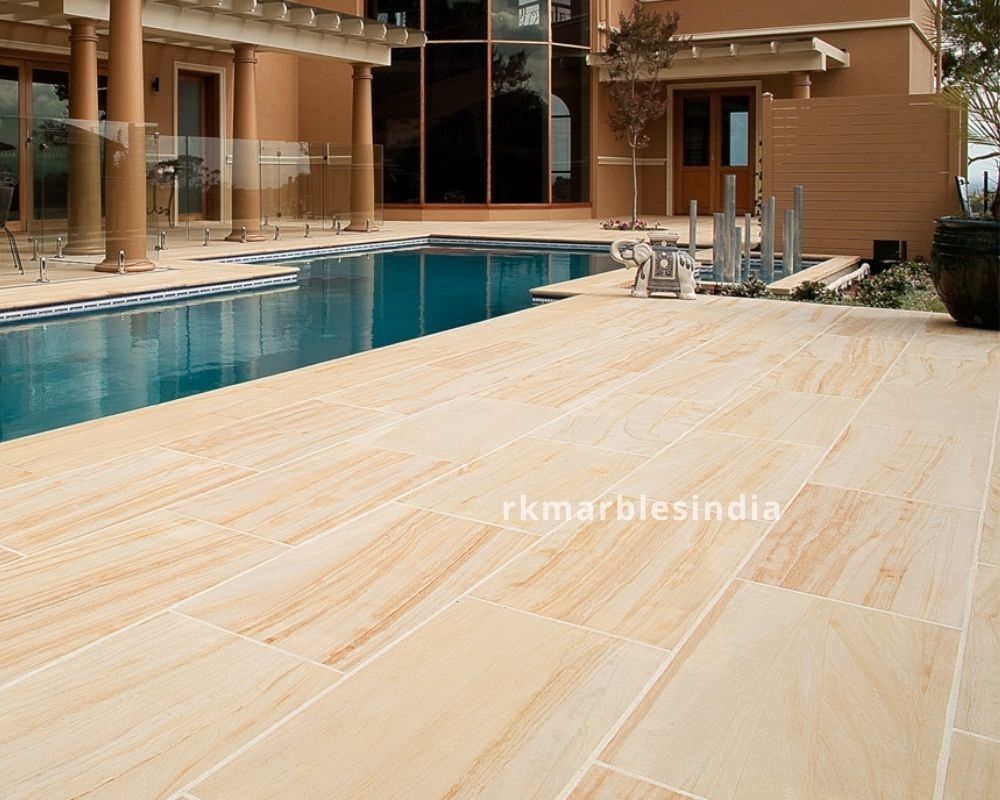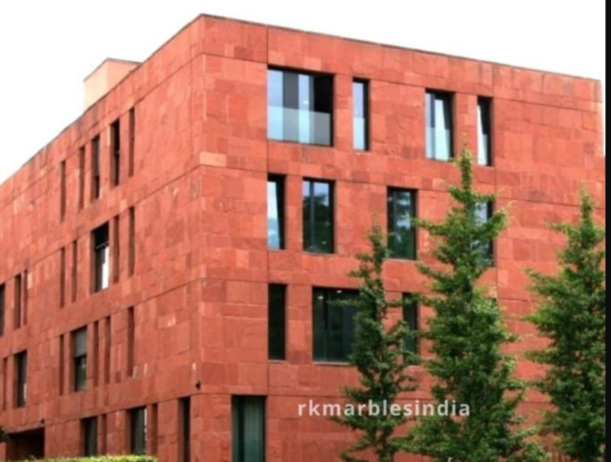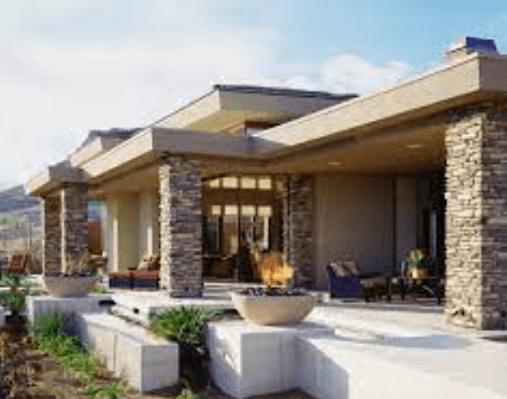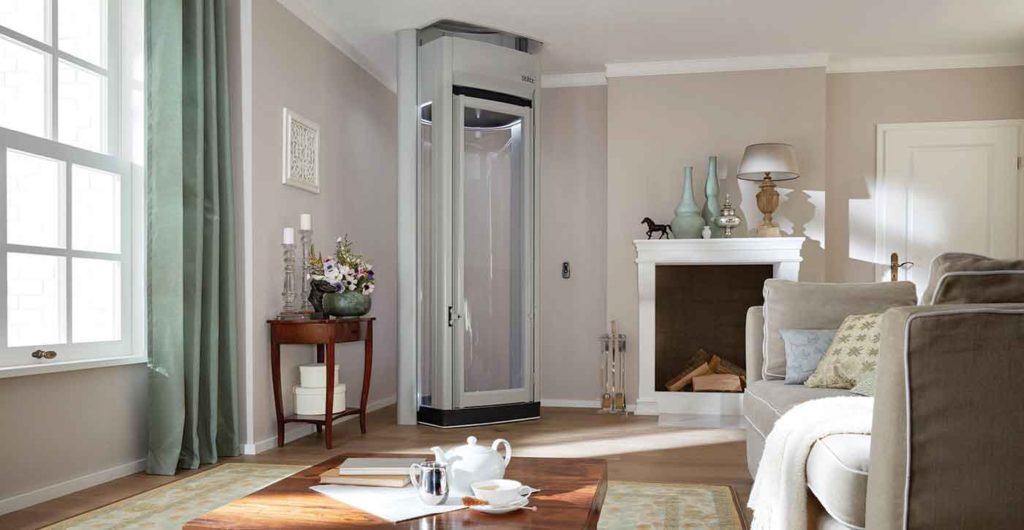Exploring the Different Types of Sandstone: From Golden Beige to Rustic Red

Welcome to a colourful journey through the world of sandstone! From its stunning golden beige hues to its rustic red tones, sandstone is a fascinating rock that has captivated human beings for centuries. Whether you are an architecture enthusiast, a geology lover, or simply someone who appreciates the beauty of nature’s artwork, this blog post will take you on an exploration of the different types of sandstone found across the globe. So fasten your seat belts and get ready to discover the mesmerizing palette that Mother Earth has painted with her sandy brush!
Introduction to Sandstone
Sandstone is a type of sedimentary rock that is composed of sand-sized minerals or rock grains. Among the most common minerals in the Earth’s crust, quartz and feldspar make up most sandstone. Sandstone can be any colour, but the most common colours are tan, brown, gold, red and grey.
Sandstone is named for its primary component—sand grains—and its formation. Sedimentary rocks are formed from pre-existing rocks through one or more of the following processes:
1) weathering and erosion of pre-existing rocks.
2) transportation and deposition of weathered and eroded materials.
3) compaction and cementation of transported materials.
In general, sedimentary rocks are layered with the oldest layers on the bottom and the youngest on top (this is called superposition).
Most sandstones form in shallow marine environments such as beaches, deltas, lagoons, and shallow lakes. The first step in sandstone formation is usually the deposition of sand from rivers or oceans onto a beach or delta. These sands are then transported by wind or water to another location where they become part of a lagoon or lake deposit. The final step in sandstone formation is compactional diagenesis the squeezing together of sediments by the weight of overlying material or cementation the binding together of sediments by mineral precipitates such as calcite, iron oxide, or sil.
Different Types of Sandstone
Sandstone is a sedimentary rock that is composed of sand-sized grains of minerals, gravel, or organic materials. The most common mineral in sandstone is quartz. Sandstone comes in many different colours, depending on the type of minerals present and the amount of iron oxide in the rock.
Some of the most common colours of sandstone are:
- Gold Sandstone – This type of sandstone is typically composed of quartz and feldspar. It can range in colour from light yellow to dark brown.
- Flowey Yellow Sandstone
- Mint Yellow Sandstone
- Gold Sadnstone
- Red Sandstone – This type of sandstone is usually composed of hematite or goethite. It ranges in colour from reddish-brown to dark red.
- Teakwood Sandstone – Teakwood sandstone is the best sandstone for poolside areas, it gives the feel of a wooden texture and it is resistant to moisture and decay.
- Rainbow Sandstone
- Teakwood Sandstone

Benefits of Using Sandstone for Exterior Design
Sandstone is a unique material that can add character and charm to any exterior design. Its natural beauty and variety of colours make it an excellent choice for both new construction and renovation projects. Here are just a few of the many benefits of using sandstone for your next exterior design project:
1. Sandstone is Durable: It is very tough and durable, making it ideal for exterior use. It is resistant to weathering, fading, and cracking, so it will continue to look great for years to come.
2. Sandstone is Easy to Maintain: Sandstone is easy to clean and maintain, so you won’t have to spend much time or money keeping it looking its best. A simple cleaning with soap and water will keep your sandstone looking like new.
3. Sandstone Adds Character and Charm: The natural beauty of sandstone can add character and charm to any home or business. Its unique colours and textures can give your property a one-of-a-kind look that will be sure to impress your guests.
4. Sandstone is Affordable: Sandstone is an affordable material that can save you money on your exterior design project. When compared to other materials like brick or stone, sandstone is typically more affordable without sacrificing quality or durability.
Prices of the Different Types of Sandstone
Prices of sandstone can vary depending on the type of stone, quality, and other factors. Here is a breakdown of the prices of some of the most popular types of sandstone:
Gold sandstone: This type of sandstone ranges from Rs 70-95 per square foot.
Red sandstone: This type of sandstone ranges from Rs 62 per sq. ft.
Teakwood sandstone: This type of sandstone ranges from Rs 65-70 per square foot.
Pros and Cons of Installing a Sandstone Exterior
When it comes to choosing a material for your home’s exterior, there are a lot of options to choose from. One popular option is sandstone. Sandstone is a sedimentary rock that is made up of smaller rocks or minerals. It is available in a variety of colours, including golden beige, rustic red, and more.
There are a few things to consider before deciding if sandstone is the right material for your home. Here are some pros and cons of installing a sandstone exterior:
Pros:
- Sandstone is a durable material that can withstand extreme weather conditions.
- It is also low maintenance and does not require much upkeep.
- Sandstone has a natural beauty that can add character and charm to your home’s exterior.
Cons:
- Sandstone can be expensive to purchase and install.
- It can also be difficult to find contractors who are experienced in working with sandstone.
Conclusion
Sandstone is one of the most versatile and durable building materials available, making it perfect for various projects. Its unique colour palette offers everything from bright gold to deep rustic reds, making sandstone an ideal material for any project that requires a vibrant look. Whether you’re looking to create stunning fireplaces or outdoor features like patios and walkways, there’s a type of sandstone out there that will meet your needs. With its durability and beauty, sandstone can be used to bring life to any project.




